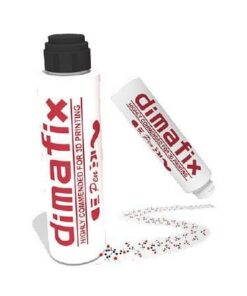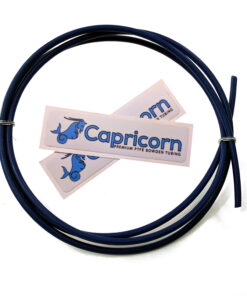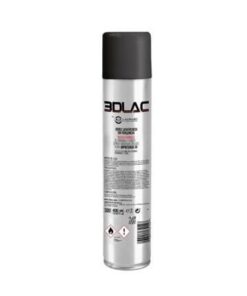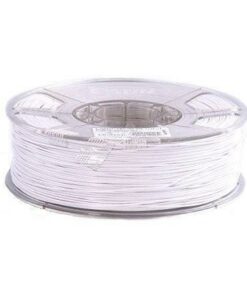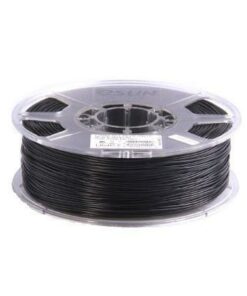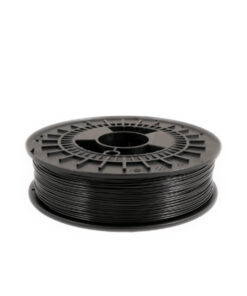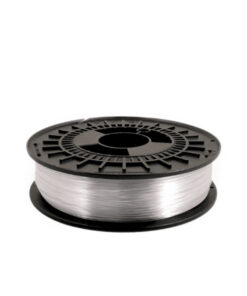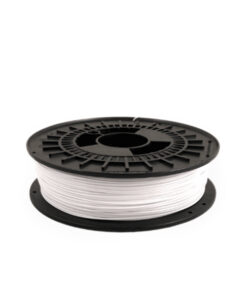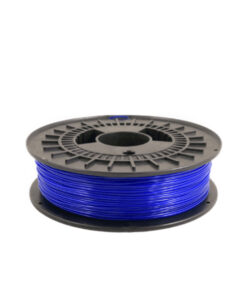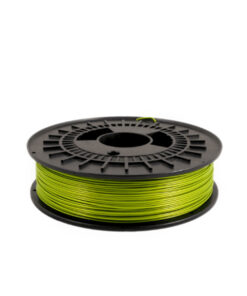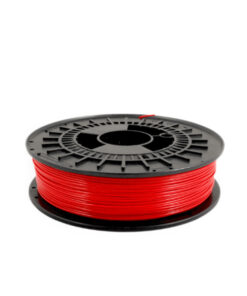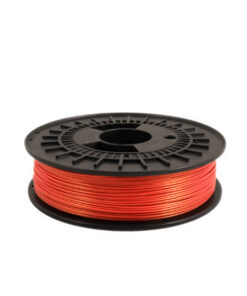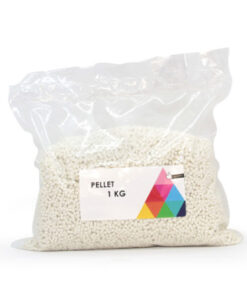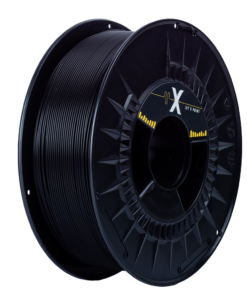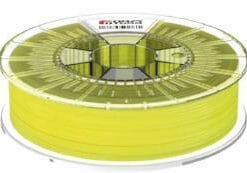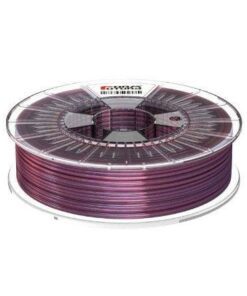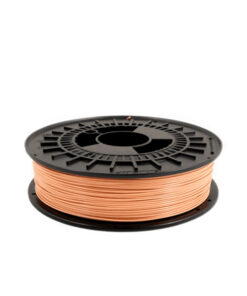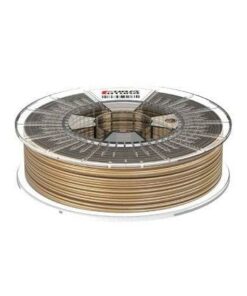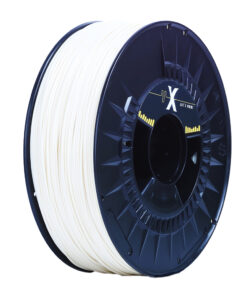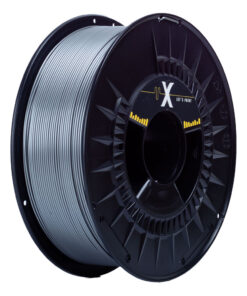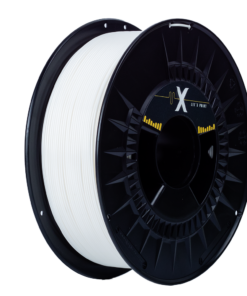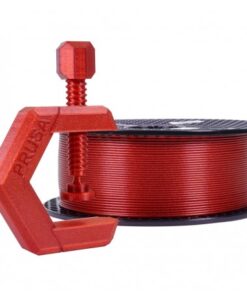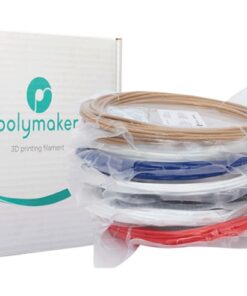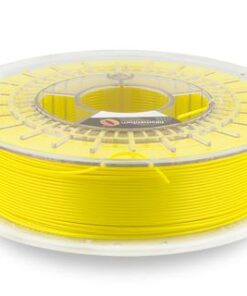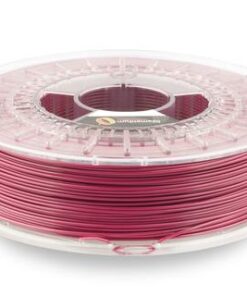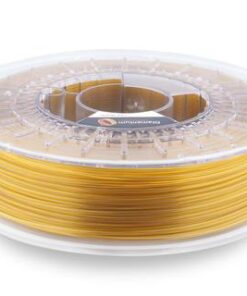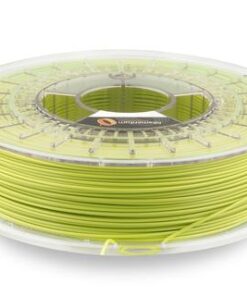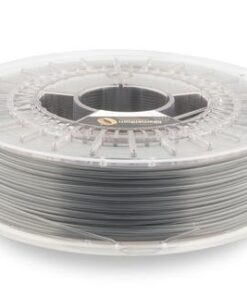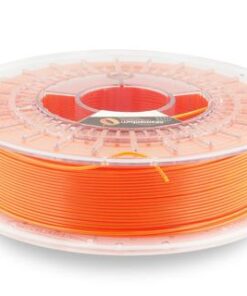Here you will find a great variety of PETG filaments in diferent colors and sizes.
PETG filament for 3D printers is one of the most used materials, it is an easy to print material, with good chemical and mechanical resistance, it does not give off odours. Due to its hardness, resistance and ease of printing, it is considered a good substitute for ABS. In addition, it is recyclable.
Characteristics, properties and uses of PETG filament for 3d printers
The PETG (Polyethylene Terephthalate Glycol) filament is one of the materials best valued by users. These filaments are a modification of the PET Filament to which Glycol is added, hence the G in the name.
This addition of Glycol to the filament, gives the PETG, in comparison with the PET, more hardness, less fragility, and therefore more resistance to impacts, and in addition, it can be sterilized.
PETG has a very good adhesion to the base or bed, so there is no warping when using this material. In addition, it is more flexible than ABS or PLA, bending a little before breaking.
Another point in favour of PETG, is that, among all the range of filaments, this is the one with the highest transparency or translucency, so if this is what you are looking for, it is undoubtedly the best option.
Things you should know before buying PETG:
- Easy to print, similar to PLA
- The printing temperature range is high, between 240 – 250 ºC. Remember to check the manufacturer’s instructions, as there are PETGs that are printed in the lower temperature range of 220-250 ºC.
- The PETG does need a warm bed, around 70 ºC (remember to always check the manufacturer’s recommendations)
- It is advisable to reduce the flow 85 – 90% depending on the brand, as it is somewhat more viscous than PLA
- Your impression will be left with a high degree of transparency
- It has higher resistance to shocks than PLA
- A resistance to the temperature of around 80 – 90 ºC
- It has good chemical resistance.
- The material does not give off odours during printing
- PETG prints can be in contact with foodPETG is recyclable
- Needs a coating fan
Differences between PETG and PLA
- PLA is slightly easier to print than PETG filament and is more forgiving of 3D printing errors.
- PETG is more durable, stronger and can handle a stronger impact, although it is also more prone to scratching
- Both materials show reduced shrinkage during cooling, which is where the differences are greatest.
- PETG filament is generally more expensive.
- PETG is more translucent, almost transparent, and generally brighter.
- Both are considered to be food safe.
Weight or Size
This type of filament is relatively new, so the variety of rolls is more limited than in other cases such as ABS:
- 1Kg spools: they are the largest option available
- 0.5Kg – 0.75Kg spools: it depends on the manufacturer, but they usually come in 750 gr. spools.
How to print PETG?
One of the great advantages of this material, and its ease of printing If you are used to PLA, PETG will not be a problem for you.
You can use the same values as with PLA, you just need to increase the temperature of the nozzle, bed, and flow, these are the general parameters:
- Nozzle temperature: 230-250 ºC
- Hot bed: 70-75 ºC
- Flow rate: 0.9 – 1
Please note that these values are generic, we recommend that you always follow the manufacturer’s recommendations, as the values may vary.
Filament colour range
One of the advantages of the PETG filament is its high degree of transparency, so you can achieve very attractive results by choosing a good colour. Among the range of available colours, there are mainly the following:
Black
White
Grey
Red
Blue
Green
Yellow
Orange
Keep in mind that as this is a “recent” material, more and more colours are coming out, so remember to keep an eye on what’s new.
Sections 1.75mm and 2.85mm
As with most filaments, with the exception of some higher shore grade flexible filaments, PETGs are also available in both 1.75mm and 2.85mm formats, so you can print on this material regardless of your printer.
Remember that when we talk about 2.85mm filaments we also refer to 3.00mm ones.
PETG material range
Little by little new modifications of this variable of filaments are coming to the market, let’s remember that PETG is in itself a variant of PET…
- PETG filaments:
- PET filament + Glycol
- CPE filament (Co-Polyester):
Mainly marketed by the Fillamentum brand, it is a modified PETG filament, suitable for more technical prints. CPE is a very hard and impact resistant material, and retains the advantages of PETG, such as: adhesion between layers, chemical and high temperature resistance, easy printing, and no odour.
- XT, HT and NGEN filaments:
These 3 filaments are co-polyesters belonging to the ColorFabb brand.
The XT filament is a ColorFabb branded Co-polyester made from the Eastman Amphora™ 3D polymer in a variety of colours. The HT Filament is another co-polyester, created with Amphora HT5300 and has excellent properties, while NGEN, created with Amphora AM3300, achieves a spectacular finish and detail, as well as soft textures.
Another ColorFabb branded Co-polyester created with Amphora HT5300 and which has excellent properties.
Filaments Ngen:
Also from the Colorfabb brand
The benefits of PETG filament compared to PET
There are a number of benefits that PETG offers over PET, especially when it comes to 3D printing:
- It is more durable.
- The added glycol prevents the material from crystallising and becoming brittle.
- It is more resistant to impact.
- It can be sterilised.
PETG filament brands
The best known brands of PETG filament, and those with the best reputation among users, are the following:
- Sakata 3D
- Smart Materials 3D (Smartfil)
- FormFutura
- Fillamentum
- i3D Tested

